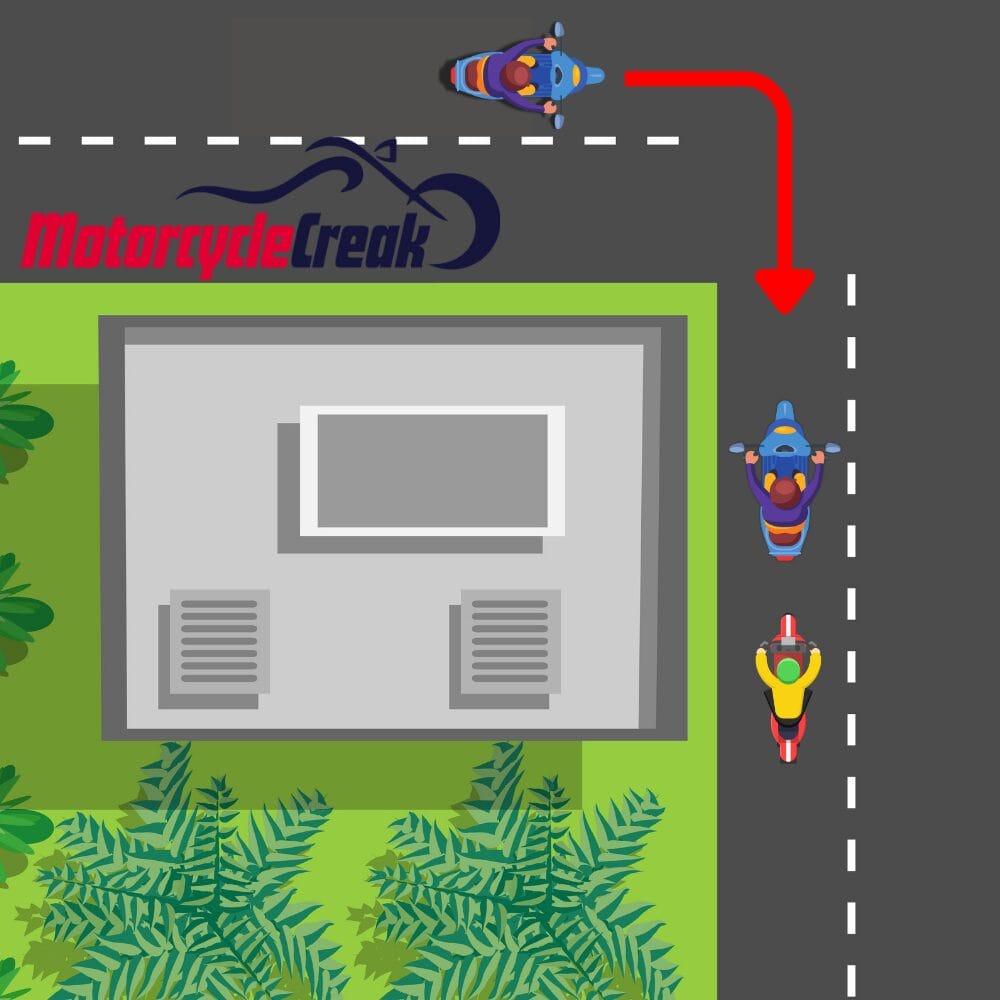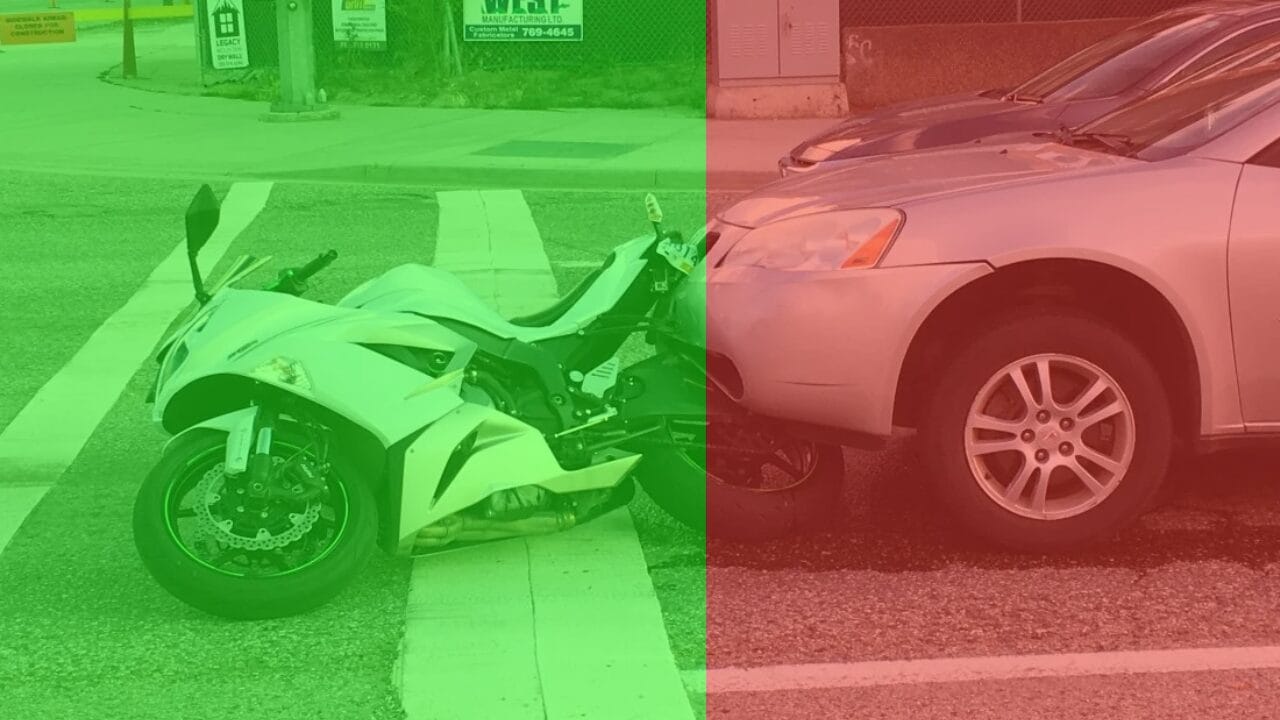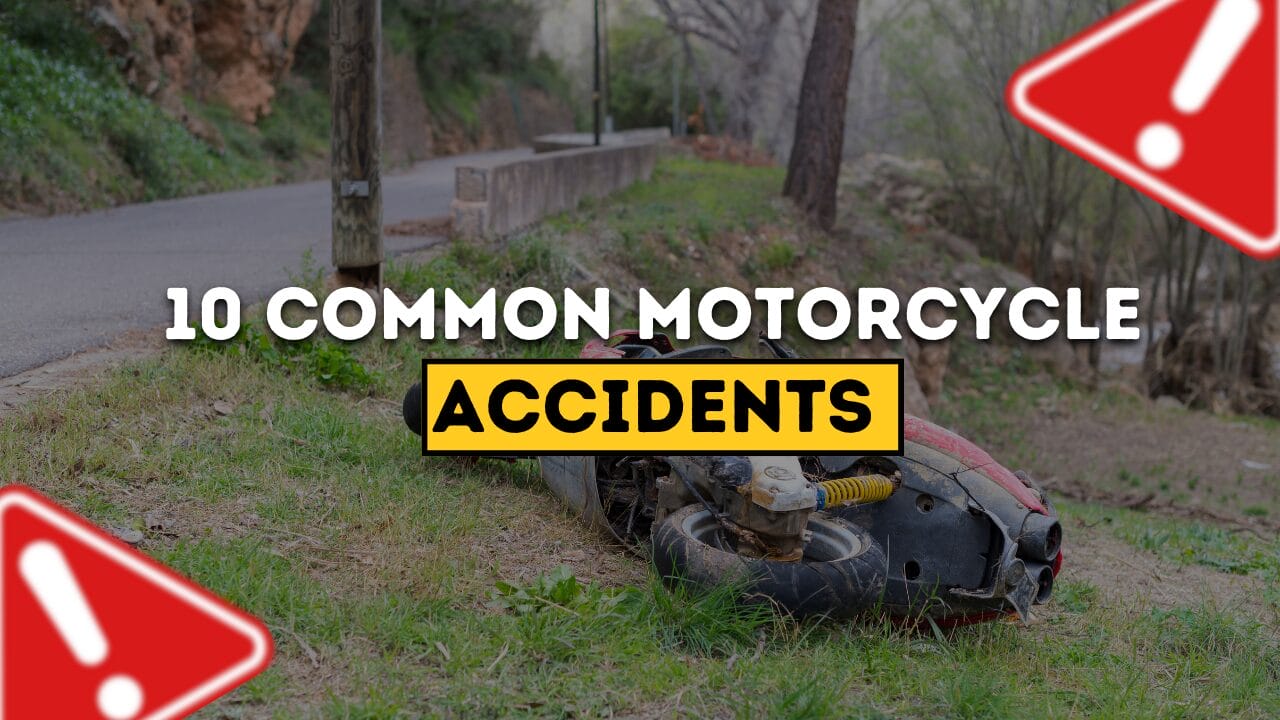10 Common Motorcycle Accidents and How to Avoid Them
Did you know nearly 60% of motorcyclists are involved in accidents within their first year of riding? It’s a staggering number, and while the open road offers a sense of freedom, it can also be a dangerous place for those unprepared.
Motorcycle accidents are often severe, leading to serious injuries or worse. But here’s the good news: many of these accidents are preventable if you know what to look out for and how to react. The truth is, riding smart isn’t just about wearing a helmet; it’s about understanding the risks and learning how to avoid them.
In this article, we’ll dive into the ten most common motorcycle accidents and, more importantly, how to avoid them. From dodging that pesky left-turning car to mastering wet roads, you’ll find practical tips that could make all the difference.
Ready to ride safer? Let’s hit the road and start with the first accident on our list: the dreaded left-turn collision.
1. Left-Turn Accidents
Left-turn accidents are a motorcyclist’s worst nightmare. They usually happen at intersections where cars turn left. Statistics show that over 53% of all motorcycle accidents are caused just because someone didn’t see them coming.

Here’s a quick story from my early riding days. I was on my way home, approaching an intersection. The light was green, so I kept my speed steady. Out of nowhere, a car turned left, cutting across my path. I was lucky that I had just enough time to swerve and avoid hitting something. My heart was racing, but that close call taught me a valuable lesson about riding defensively.
Prevention Tips:
- Visibility: Wear bright clothing to make yourself as visible as possible, especially at night, and always use your turn signals.
- Anticipation: Expect the unexpected, and be ready to brake or swerve if necessary. Slow down as you approach intersections.
- Positioning: Ride in a lane position that gives you the best chance of being seen. This often means staying in the left part of your lane so drivers can spot you before they move.
- Headlight Usage: A bright headlight can catch a driver’s eye and give you the extra visibility you need to stay safe. So, keep your headlight on, even during the day.
- Eye Contact: When possible, make eye contact with drivers at intersections. If they see you looking at them, they’re more likely to notice you and less likely to pull out in front of you.
2. Lane-Switching Accidents
Lane-switching accidents are the silent killers on the road. One minute, you’re riding along, and the next, a car suddenly veers into your lane without so much as a blink of a turn signal. It’s like they’re playing a dangerous game of hide and seek, but you’re the one caught in the blind spot.

These accidents are more common than you might think. Statistics reveal that nearly 75% of traffic accidents involve a vehicle switching lane without checking its blind spots. In fact, motorcyclists are three times more likely to be involved in a lane-switching accident compared to other vehicles. That’s over one-third of crashes that could’ve been avoided with a quick glance over the shoulder.
Prevention Tips:
- Blind Spot Awareness: Stay out of those sneaky spots where drivers can’t see you. If you can’t see their face in mirrors, they can’t see you either. It’s a bit like trying to avoid being the invisible man—stay visible, stay safe.
- Mirror Usage: Use your mirrors religiously, but don’t rely on them alone. Always double-check by turning your head before making a lane change. It’s your life on the line, so take that extra second to be sure.
- Defensive Riding: Assume every car might switch lanes without warning. Keep a safe distance, and be ready to brake or swerve if a car starts to drift into your space. Think of it as playing chess—always be a few moves ahead of the other players.
- Use Your Horn: Don’t be shy about using your horn if a car starts drifting into your lane. A quick honk can snap them out of their lane-switching daze and make them aware of your presence. It’s like giving them a little wake-up call.
- Watch for Signals: While many drivers fail to use turn signals, some do. Pay attention to any signaling and be prepared for sudden moves. But don’t trust the signal alone—always watch the car’s body language for any signs of lane-changing behavior.
3. Rear-End Collisions
Rear-end collisions might sound like something that only happens in a traffic jam, but they can occur anytime, especially when you’re stopped or slowing down. Imagine cruising along smoothly, only to have a car slam into you from behind because the driver didn’t notice you were braking. It’s a jarring experience that can lead to serious injuries or worse.

Rear-end accidents are alarmingly common. Statistics show that these collisions make up around 29% of all motorcycle accidents. With so many drivers distracted or not keeping enough distance, it’s crucial to take steps to protect yourself.
Prevention Tips:
- Maintain Safe Following Distance: Keep plenty of space between you and the vehicle in front. If you have room to maneuver, you’ll have a better chance of avoiding a rear-end collision. Think of it as leaving yourself an escape route if things go sideways.
- Use Your Brake Light: Ensure your brake lights are working properly. When you slow down, your brake lights should signal drivers behind you to start easing off their gas. It’s like sending a “heads up” message to those following.
- Avoid Sudden Stops: Try to avoid making abrupt stops whenever possible. Smooth, gradual braking gives drivers behind you more time to react. It’s a bit like easing into a turn—smooth moves are safer for everyone.
- Watch Your Mirrors: Keep an eye on your mirrors, especially in stop-and-go traffic. If you see someone getting too close, you can take evasive action before they hit you.
- Communicate with Signals: Use your turn signals well in advance of any lane changes or turns. This gives drivers behind you a clear warning of your intentions and helps prevent them from slamming into you.
4. Cornering Accidents
Cornering accidents can turn a leisurely ride into a disaster if you’re not careful. Picture this: you’re zipping through a turn a bit too fast, and suddenly, your bike starts to slide. Taking corners too quickly can lead to losing control, and before you know it, you’re on the pavement.

These types of accidents are more common than you might think. Data shows that approximately 23% of motorcycle crashes are due to cornering errors. It’s a reminder that even the most experienced riders can face trouble if they don’t handle turns correctly.
Prevention Tips:
- Slow Down Before the Turn: Always reduce your speed before you enter a corner. It’s like setting up for a good pitch—get the speed right before you hit the curve.
- Look Through the Turn: Focus your gaze on where you want to go, not just right in front of you. This helps guide your bike smoothly through the turn, much like following a winding path in a forest.
- Lean with the Bike: Keep your body aligned with the bike’s lean. Trying to stay upright while the bike leans can throw you off balance. Imagine you’re a part of the bike’s lean rather than fighting against it.
- Use the Proper Gear: Downshift to a lower gear as you approach a turn. This gives you better control and allows for smoother acceleration out of the curve. It’s like gearing down for a steep hill—control is key.
- Practice Cornering Techniques: Regularly practice your cornering skills in a safe environment. The more you practice, the more natural it will feel. Think of it as a workout for your riding skills—repetition makes perfect.
Cornering accidents can happen in the blink of an eye, especially when you take a turn too fast. Picture this: you’re leaning into a curve, feeling the thrill of the ride, and suddenly, you realize the corner is tighter than expected. If you’re going too fast, you risk losing control and skidding out. It’s a high-stakes game where misjudgment can lead to disaster.
Statistics show that approximately 25% of motorcycle crashes involve cornering accidents. This means one in four riders could find themselves in a sticky situation if they don’t cautiously approach turns.
Prevention Tips:
- Reduce Speed Before the Turn: Slow down before you hit the corner. You want to enter the turn at a manageable speed, like easing into a dance step rather than jumping in with both feet.
- Look Through the Turn: Focus your gaze on where you want to go, not just directly in front of you. It’s like steering with your eyes—where you look is where you’ll end up.
- Use Proper Body Position: Lean into the turn with your body. Shift your weight to the inside of the corner to help maintain balance and traction. Think of it as shifting your weight in a canoe to keep it upright.
- Smooth Throttle Control: Apply the throttle smoothly through the turn. Abrupt acceleration can cause your rear tire to lose grip. Smooth, steady power is key to maintaining control—like gliding rather than jerking.
- Check Road Conditions: Always be aware of road conditions before entering a turn. Watch for debris, wet patches, or gravel that could make the road slippery. It’s like surveying the playing field before the game starts.
5. High-Speed Collisions
High-speed collisions on a motorcycle are a recipe for disaster. The faster you go, the more severe the impact will be if something goes wrong. Imagine hitting a wall at 30 mph versus 60 mph—one will just shake you up, while the other can cause serious harm. Speed not only reduces your reaction time but also increases the force of impact, making crashes far more dangerous.

Statistics paint a stark picture: about 40% of motorcycle fatalities involve high-speed collisions. This grim figure highlights the crucial need to manage your speed and stay within safe limits to avoid becoming a statistic yourself.
Prevention Tips:
- Obey Speed Limits: Stick to posted speed limits and adjust your speed based on road and traffic conditions. It’s like following the rules in a game—play by them to stay safe and avoid penalties.
- Control Your Throttle: Avoid rapid acceleration pushing you beyond safe speeds. Smooth, controlled throttle use helps maintain stability and keep you within safe limits. Think of it as easing into a conversation rather than barging in with a shout.
- Check Your Surroundings: Always be aware of your environment. Scan for potential hazards and adjust your speed accordingly. It’s like keeping an eye on all the players in a soccer match—anticipate their moves to stay ahead of the game.
- Practice Emergency Braking: Regularly practice emergency braking to improve your reaction time. Knowing how to stop quickly and safely can be a lifesaver if you want to avoid a high-speed collision. It’s like knowing how to slam on the brakes in a high-speed chase scene.
- Avoid Aggressive Riding: Resist the urge to speed or ride aggressively, especially in heavy traffic. Aggressive moves can lead to dangerous situations and high-speed crashes. Treat your ride like a smooth dance—stay graceful and controlled rather than frantic.
6. Alcohol-Related Accidents
Riding under the influence of alcohol is like playing Russian roulette with your life. Alcohol impairs your judgment, slows your reflexes, and reduces your coordination—all crucial elements for safe motorcycle riding. It’s a dangerous cocktail that mixes thrills with risks, often leading to catastrophic accidents.

Statistics are sobering: alcohol is a factor in approximately 27% of all motorcycle crashes. This staggering figure highlights how crucial it is to stay sober and focused when you’re on the road.
Prevention Tips:
- Designate a Sober Rider: If you’re planning to drink, arrange for a sober rider or alternative transportation. It’s like having a designated driver—don’t let alcohol be the reason you don’t make it home safely.
- Avoid Drinking Before Riding: Resist the temptation to ride after even a single drink. Alcohol affects your ability to ride safely, so it’s best to keep the keys in your pocket if you’ve been drinking. Think of it as a simple rule: drink, don’t ride.
- Plan Ahead: Before heading out, plan to get home safely if you end up drinking. Having a backup plan is like having an insurance policy for your night out.
- Know Your Limits: Understand how alcohol affects you personally and know when you’re approaching your limit. It’s like knowing your own engine’s red line—don’t push it beyond what’s safe.
- Educate Yourself: Be aware of the effects of alcohol on your riding skills and reaction times. Education is key to making informed decisions. Think of it as knowing the rules of the road—it helps you stay on the right path.
7. Dooring Accidents
Dooring accidents can turn a routine ride into a sudden jolt of chaos. This type of accident happens when a parked car’s door swings open into the path of an unsuspecting rider. It’s like walking into an unexpected wall—one minute you’re cruising along, and the next, you’re faced with an obstacle you didn’t see coming.

Statistics show that dooring accounts for about 6% of all motorcycle accidents. That might seem small, but it’s a significant risk that can cause serious injuries.
Prevention Tips:
- Maintain Safe Distance: Ride at least three feet away from parked cars. This extra space helps you avoid doors that swing open without warning. Think of it as giving yourself a buffer zone from unexpected surprises.
- Watch for Car Movement: Keep an eye on parked vehicles. Look for any signs of movement or people inside the car who might be about to open a door. It’s like being on high alert for sudden changes—stay sharp and ready.
- Use Your Horn: If you’re approaching a row of parked cars, don’t hesitate to use your horn to alert anyone inside. A quick beep can be enough to make someone think twice before opening their door. It’s like giving them a friendly reminder that you’re there.
- Position Yourself Strategically: Ride slightly towards the center of your lane when passing parked cars. This position helps you avoid doors and other potential hazards. Think of it as finding the safest line through a tricky obstacle course.
- Be Extra Cautious in Urban Areas: In busy city streets, be especially vigilant for dooring accidents. High-density parking means higher risk, so adjust your speed and awareness accordingly. Treat city riding like a high-stakes game—be extra cautious and prepared for anything.
8. Wet or Slippery Road Accidents
Wet or slippery roads can turn a simple ride into a slip-and-slide adventure. When rain or ice turns the pavement slick, it’s easy to lose traction and control. Imagine riding on a greasy surface—it’s a recipe for skidding and losing your balance.
Statistics reveal that slippery conditions contribute to about 18% of motorcycle accidents. That’s a significant chunk of incidents caused by something as simple as rain or ice, underscoring the need for caution.
Prevention Tips:
- Slow Down: Reduce your speed when the roads are wet or slippery. Lower speeds give you better control and reduce the risk of skidding. Think of it as easing off the gas pedal rather than racing through a mud puddle.
- Increase Following Distance: Give yourself extra room between you and the vehicle ahead. This extra space allows for a longer stopping distance and more time to react. It’s like giving yourself a safety net in case things go wrong.
- Avoid Sudden Movements: Steer and brake smoothly to avoid sudden changes in speed or direction. Abrupt movements can lead to skidding. Imagine gliding through a dance rather than jerking through it—smooth and controlled is the way to go.
- Watch for Puddles and Ice: Stay alert for patches of water or ice that can be particularly treacherous. These hidden hazards can cause your tires to lose grip. It’s like avoiding hidden traps in a video game—keep your eyes peeled for trouble spots.
- Use Proper Tires: Make sure your tires are in good condition and appropriate for the weather. Proper tread helps maintain traction on slippery surfaces. Think of your tires as your bike’s lifeline to the road—keep them in top shape to stay safe.
9. Collisions with Animals
Collisions with animals can turn your peaceful ride into a chaotic mess. Encountering wildlife, especially in rural areas, poses a serious risk. Whether it’s a deer darting across the road or a stray dog wandering into your path, these sudden encounters can lead to serious accidents. It’s like hitting an unexpected speed bump—only far more dangerous.
Statistics show that animal collisions account for roughly 14% of motorcycle accidents in rural areas. This highlights the significant risk that wildlife poses to motorcyclists and the importance of staying alert.
Prevention Tips:
- Stay Vigilant in Rural Areas: Keep a sharp eye on the road, especially in areas where wildlife is common. Animals can appear out of nowhere, so being alert is key. Think of it as being on the lookout for surprise guests at a party—always be prepared.
- Use High Beams Wisely: At night, use high beams to increase visibility and spot animals from a distance. This can give you more time to react if you see an animal on the road. It’s like shining a spotlight on potential hazards.
- Observe Wildlife Crossing Signs: Pay attention to signs indicating wildlife crossing areas. These are placed in high-risk zones where animals are known to wander. It’s like having a heads-up before the game starts—use the information to stay ahead.
- Reduce Speed in High-Risk Areas: Slow down when riding through areas with a lot of wildlife activity. Lower speeds give you more time to react if an animal suddenly appears. Treat it like navigating through a tricky obstacle course—take it slow and steady.
- Learn Emergency Maneuvering: Practice quick reflexes and emergency maneuvers. Being prepared to swerve or stop quickly can help you avoid collisions. It’s like having a backup plan ready—stay agile and ready for action.
10. Group Riding Accidents
Riding in a group can be a blast, but it comes with its own set of challenges. When you’ve got a parade of motorcycles lined up, maintaining a smooth and safe ride requires coordination and communication. It’s like trying to dance in sync with a large group—one misstep and the whole routine can go awry.

Statistics indicate that group riding accidents make up about 8% of motorcycle crashes. These incidents often arise from issues like poor communication or lack of coordination among riders, proving that even the best-laid plans can hit a snag.
Prevention Tips:
- Establish Clear Communication: Make sure everyone in the group knows the signals for turns, stops, and hazards. Clear communication helps avoid confusion and keeps everyone on the same page. Think of it as choreographing a dance—everyone needs to know their moves.
- Maintain Safe Distances: Keep adequate spacing between motorcycles to allow for sudden stops or changes in direction. This buffer zone helps prevent collisions if someone needs to brake unexpectedly. It’s like giving your fellow riders a bit of elbow room.
- Ride at a Unified Pace: Agree on a speed that suits the group’s skill levels and stick to it. Varying speeds can lead to accidents if riders are caught off guard. It’s like driving in a convoy—everyone needs to match the pace.
- Use a Lead and Sweep System: Designate a lead rider to set the pace and a sweep rider to ensure no one is left behind. This system helps keep the group together and allows for better ride management. Think of it as having a guide and a tail to keep everyone in line.
- Be Extra Cautious at Intersections: Pay close attention at intersections where group riders might be separated. Extra caution here prevents miscommunication and potential crashes. It’s like ensuring everyone gets through a tricky intersection without getting tangled up.
Conclusion
In a nutshell, motorcycle safety boils down to being prepared and aware. We’ve covered ten common accidents—from left-turn collisions to group riding mishaps—and highlighted practical tips to avoid trouble. Whether avoiding blind spots or handling slippery roads, every bit of caution helps keep you upright and rolling smoothly.
So, don’t keep this valuable info to yourself—share it with your riding buddies! Spread the word, and let’s make the roads safer for everyone. After all, safety isn’t just about avoiding accidents; it’s about ensuring you can enjoy the thrill of the ride for years to come.
Remember, every ride is a chance to practice awareness and stay sharp. Ride safe, stay alert, and keep the rubber side down!







